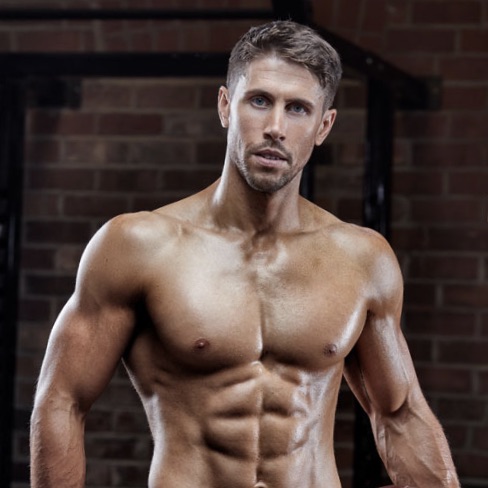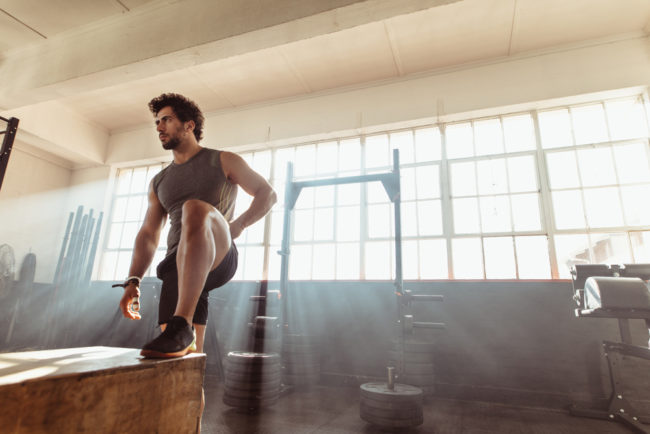Okay, so there’s no such thing as the single best legs exercise, but that got your attention! There are however beneficial exercises that you’re missing out on. You should also know that how you execute any exercise is key, something often overlooked when there’s a heavy-ass barbell on your back that wants to crush you.
Step-Ups are also one of these, not often performed and more often executed incorrectly. And no that doesn’t mean those circuit class
We’re talking real step-ups that you can load the heck out of when you get good at them.
There are a multitude of variations, from dumbbell or barbell, and with names like Petersen and Zercher, each with something that might be the missing link in your lower body development.
Step-up variations can help you build sport-specific strength and power, grow bigger quads, or give you buns of steel depending on which variation you use. They can also develop neglected single-leg strength, build resilience and bulletproof you from injury.
Not forgetting, they’re also a useful addition to a high-performance fat loss program, such as Metabolic Resistance Training.
That’s a winning formula you can’t pass up on, so here’s what you need to know.
The perfect step-up
A step-up isn’t merely stepping up on to a box. It has many different components to it and nuances you should understand. If you do them right, then they could be the best legs exercise you’re not doing.
Perform step-ups wrong on the other hand, and your training stimulus will be about as effective as climbing a set of stars.
I personally recommend that no matter what your goals are, whether strength, size or performance; Petersen Step-ups should be mastered FIRST before moving on to any other variation.
Petersen Step-Ups

The Petersen Step-Up also helps to develop certain movement habits that will transfer later to more loaded variations. Watch this video to find out more.
Progress to hand-held load variations
Once you’ve mastered Petersen Step-Ups with a little weight there are a variety of directions you could take things. Your goal is to progress by adding load and increasing range of motion.
Using some form of weight implement held towards your sides (dumbbell, kettlebell) is the logical next
You can also play about with certain body angles, such as using a slight forward lean to further target the glutes. See the videos below for some examples.
Progress to Advanced Hand-Held Load Variations, or not…
Progressing to more advance hand-held load variations can be important for many, especially athletes. But feel free to skip these progressions if they don’t fit in with your goals.
One way to progress is to add movement complexity or change how
Both exercises shown below are hand-held load variations where there’s a horizontal vector component to them. You’re teaching your body to apply force in a more horizontal direction.
For sport this is particularly useful, as many athletic movements require some horizontal force production. You’ll also get a good level of glute activation in these, since arguably the glutes are the most important muscle for horizontal force production.
When maximal load is your goal barbell is best
Don’t even think about starting here unless you’ve mastered some of the prior exercises shown. Remember with step-ups the devil is in the details, so learn how to do them right or not at all.
If you can master basic step-up execution, you’ll have built the foundations to progress fast whilst remaining injury-free. However, at some point as with any of the best legs exercise out there, the load needs to be progressed.
The most effective way to add load to any step-up is by taking the load higher up your body with a barbell or safety squat bar on your back. You can also do front rack variations with a barbell or hold it in a Zercher position whilst performing the step-up.
Since the load is further from the floor when using a bar on your shoulders there’s an additional whole-body stabilisation component. It also goes without saying that a bar of any type is much easier to add weight to after a certain point.
In a very recent 2019 study, Appleby et al. found comparable ground reaction force in the step-up versus a back squat, despite the well-trained participants using a lower load in the step-ups. This demonstrates the step-up can keep up with a squat any day of the week when it comes to lower body strength development.
Step-ups could truly be the best legs exercise you’re not doing. If you can abide by the laws of the perfect step-up, you will achieve outstanding single-leg strength, athleticism and size.

I build Olympians, Cover Models and those who want to look like them. Author or “Ultimate Abs” available in all good book stores.

Another great article Gareth
Thanks
Antony
That’s great to hear Antony – Thank you!